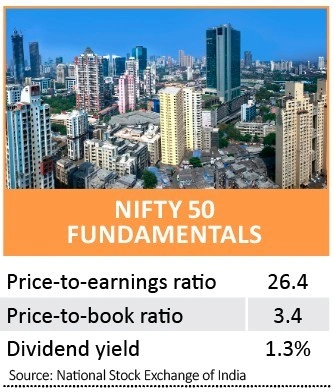
Launched in the mid-1990s by the National Stock Exchange of India, the Nifty 50 is one of two key benchmarks for Indian equities along with the Bombay Stock Exchange’s Sensex index.
As its name suggests the Nifty includes 50 constituents, whereas the Sensex includes 30, and as such it covers a broader spread of industries, encompassing some 22 different sectors of the Indian economy.

Rebalanced twice a year, constituents are selected by their market value. The stock with the largest weighting in the index as at 31 January 2020 was HDFC Bank, which is the number one private sector lender by assets in India. Financial services firms represent more than 40% of the index.
In a sign of the growing importance of innovation in the Indian economy, IT is the third largest industry in the index with multi-national firm Infosys, a provider of software, outsourcing and business consultancy services, in the list of top 10 constituents.

Conglomerates, diversified across a range of different business areas, remain more common in emerging markets than they are in developed economies. Reliance Industries is a good example, operating in areas as diverse as petrochemicals, textiles and telecommunications.
In the last 20 years the Nifty has gone up seven-fold compared with an advance of just 20% for the FTSE 100.
UK investors can gain exposure to Indian equities through diversified emerging markets investment vehicles such as the Templeton Emerging Markets Investment Trust (TEM).
‹ Previous2020-02-27Next ›

 magazine
magazine











